
In this video segment from Nature, Cloud, a two-year-old horse, interacts with his family in the wild.
- Subject:
- Fine Arts
- Material Type:
- Lecture
- Provider:
- PBS LearningMedia
- Provider Set:
- Teachers' Domain
- Date Added:
- 11/03/2017

In this video segment from Nature, Cloud, a two-year-old horse, interacts with his family in the wild.
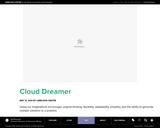
In pretending, we learn to navigate with ease between real and imaginary worlds while learning the differences between them. Using our imaginations encourages original thinking, flexibility, adaptability, empathy, and the ability to generate multiple solutions to a problem. Pretend play helps us learn to think visually and spatially and to both capture and express ideas.
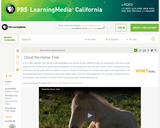
In this video segment from Nature, experience life in the wild for Cloud, a newborn colt.

"Cocoa Ice" is set in the early 1800s and describes the exchange that occurs when a trading ship from Maine travels to the Caribbean village of Santo Domingo. The story is told in two parts, each part narrated by a girl who lives in one of these locations.

Designed with inclusivity, cultural relevance, social justice and regional curriculum in mind, these coding & robotics programs are offered free to K-12 classrooms across subject areas.
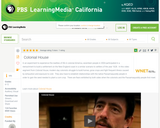
In this segment from Colonial House, Colonists and the Passamaquoddy people encounter each other for the first time.

In this video segment from Nature, scientists work to discover why bees are disappearing.
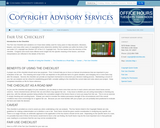
This Fair Use Checklist is helpful tool for determining whether activities are within the limits of fair use. This helpful tool created by Columbia University is applicable for teachers, students, and school librarians.
The PDF download is found on the bottom of the page.

Students learn that what you read in books can really add up when they analyze literary texts for economic concepts.

This course looks at comedy in drama, novels, and films from Classical Greece to the twentieth century. Focusing on examples from Aristophanes, Shakespeare, Cervantes, MoliĚŹre, Wilde, Chaplin, and Billy Wilder, along with theoretical contexts, the class examines comedy as a transgressive mode with revolutionary social and political implications. This is a Communications Intensive (CI) class with emphasis on discussion, and frequent, short essays.
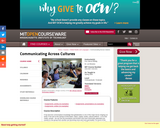
In an increasingly interconnected world, communicating across cultures is a crucial skill in the international networks of business, science, and technology. Subject examines a range of communication styles and techniques resulting from different cultural norms and traditions. It begins with a general theoretical framework and then moves into case studies. Topics include understanding the relationship between communication and culture, differences in verbal and non-verbal communication styles, barriers to intercultural communication, modes of specific cross-cultural communication activities (e.g. argumentation, negotiation, conflict resolution) and intercultural adjustment. Case studies explore specific ways of communicating in Asian and European cultures. Graduate students are expected to complete additional assignments. Taught in English.It has become commonplace knowledge that globalization is one of the major forces shaping our world. If we look at the spread of information, ideas, capital, media, cultural artifacts--or for that matter, people--we can see the boundaries and borders that have historically separated one country or one group from another are becoming more and more permeable. For proof of this close to home, you need only to look at the composition of the MIT student body: 8 percent of the undergraduates and 37 percent of the graduate students are from 109 different countries. "Communicating Across Cultures" is designed to help you meet the challenges of living in a world in which, increasingly, you will be asked to interact with people who may not be like you in fundamental ways. Its primary goals are to help you become more sensitive to intercultural communication differences, and to provide you with the knowledge and skills that will help you interact successfully with people from cultures other than your own. We hope the course will accomplish those goals by exposing you to some of the best writers and scholars on the subject of intercultural communication, and by giving you a variety of opportunities to practice intercultural communication yourself. As you read the syllabus for this course, we hope you get a sense of our commitment to making this course a rewarding experience for you.
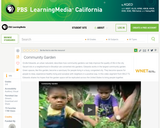
Orville Edwards describes how community gardens help improve the quality of life in the city in this video segment from WILD TV.
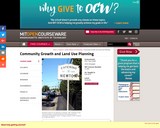
This subject explores the techniques, processes, and personal and professional skills required to effectively manage growth and land use change. While primarily focused on the planning practice in the United States, the principles and techniques reviewed and presented may have international application. This course is not for bystanders; it is designed for those who wish to become actively involved or exposed to the planning discipline and profession as it is practiced today, and as it may need to be practiced in the future.
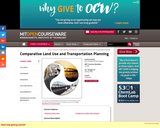
This course focuses on the land use-transportation ŰĎinteraction spaceŰ in metropolitan settings. The course aims to develop an understanding of relevant theories and analytical techniques, through the exploration of various cases drawn from different parts of the world. The course begins with an overview of the role of transportation in patterns of urban development and metropolitan growth. It introduces the concept of accessibility and related issues of individual and firm travel demand. Later in the semester, students will explore the influence of the metropolitan built environment on travel behavior and the role of transportation on metropolitan land development. The course will conclude with an examination of the implications of the land use-transportation interaction space for metropolitan futures, and our abilities to forecast them.

Thorough explanation of the how and why of text-dependent questions for close, analytic reading. Includes examples.
The Common Core State Standards for reading strongly focus on students gathering evidence, knowledge, and insight from what they read. Indeed, eighty to ninety percent of the Reading Standards in each grade require text dependent analysis; accordingly, aligned curriculum materials should have a similar percentage of text dependent questions.
As the name suggests, a text dependent question specifically asks a question that can only be answered by referring explicitly back to the text being read. It does not rely on any particular background information extraneous to the text nor depend on students having other experiences or knowledge; instead it privileges the text itself and what students can extract from what is before them.

With the purpose of assisting Wisconsin middle and high school students to better understand the various aspects of Academic and Career Planning, CESA 10 has reached out to past graduates. Young professionals will share information about their chosen occupation, as well as career-related experiences during high school that were beneficial in discovering their own ACP journey.

In this interdisciplinary seminar, we explore a variety of visual and written tools for self exploration and self expression. Through discussion, written assignments, and directed exercises, students practice utilizing a variety of media to explore and express who they are.
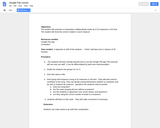
This lesson plan uses Google Flat to teach compostion and collaboration.
This site can be used to build a class song by everyone in the class contributing to the composition. Each student can contribute to the song at the same time or can add notes at a later date. The site is set up like a Google Doc. You can work with the person next to you or someone in a completely differerent location.

"This class explores composition and arrangement for the large jazz ensemble from 1920s foundations to current postmodern practice. Consideration given to a variety of styles and to the interaction of improvisation and composition. Study of works by Basie, Ellington, Evans, Gillespie, Golson, Mingus, Morris, Nelson, Williams, and others. Open rehearsals, workshops, and performances of student compositions by the MIT Festival Jazz Ensemble and the Aardvark Jazz Orchestra. ĺĘ"

A series of progressive composition projects, culminating in a large final projecting, using various types of music hardware and software. Instruction in recording, editing, synthesis, sampling, digital sound processing, sequencing, and interactive systems. Close listening to computer and electronic music from various genres including Varese, Cage, Schaeffer, Xenakis, Lansky, Stockhausen, Tcherepnin, Barlow, Gunter, and Eno. Subject focuses on using the computer as a means of musical creativity and intuition.